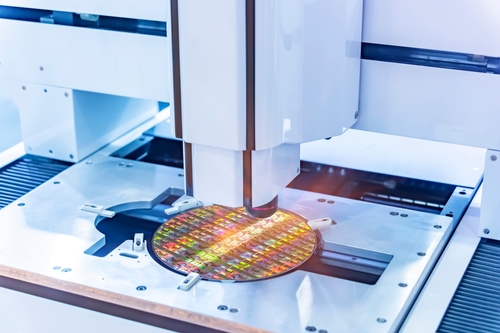The U.S. Department of the Treasury and the Internal Revenue Service (IRS) issued final rules for the Advanced Manufacturing Investment Credit (CHIPS ITC) created through the CHIPS and Science Act.

The Chips and Science Act was created by the Biden Administration to usher in a new era of semiconductor manufacturing in the United States.
“The Biden-Harris Administration’s economic agenda is onshoring semiconductor manufacturing and driving U.S. innovation in this critical industry,” Secretary of the Treasury Janet Yellen said. “Semiconductors are vital to ensuring a stable supply of low-cost consumer goods and our investments continue to strengthen those supply chains, create good-paying jobs, and safeguard our national security.”
The CHIPS ITC is strengthening the resilience of the semiconductor supply chain by incentivizing investments in U.S. facilities that manufacture semiconductors — including wafer production — or semiconductor manufacturing equipment. The CHIPS ITC, along with the $39 billion in CHIPS for America funding administered by the U.S. Department of Commerce, is a key part of the suite of incentives.
“Today represents an important milestone in the implementation of President Biden and Vice President Harris’ historic CHIPS and Science Act,” U.S. Secretary of Commerce Gina Raimondo said. “The Advanced Manufacturing Investment Tax Credit, when paired with CHIPS direct funding and loans, provides a comprehensive set of federal incentives to drive the significant investment in semiconductor manufacturing capacity occurring in the United States important to meeting our national and economic security needs.”
The CHIPS ITC is generally equal to 25 percent of the basis of any qualified property that is part of an eligible taxpayer’s advanced manufacturing facility if the qualified property is placed in service after Dec. 31, 2022, and covers construction occurring after the enactment of the CHIPS and Science Act on Aug. 9, 2022.
The CHIPS ITC final rules are largely in line with proposed regulations released in March 2023 while providing certain modifications to give taxpayers clarity and certainty. For example, the final rules provide additional clarity on the definition of what constitutes an “advanced manufacturing facility,” clarifying the inclusion of semiconductor wafer production in the definition.
The final rule also clarifies that semiconductor wafer production includes the production of wafers used for photovoltaic solar energy generation.